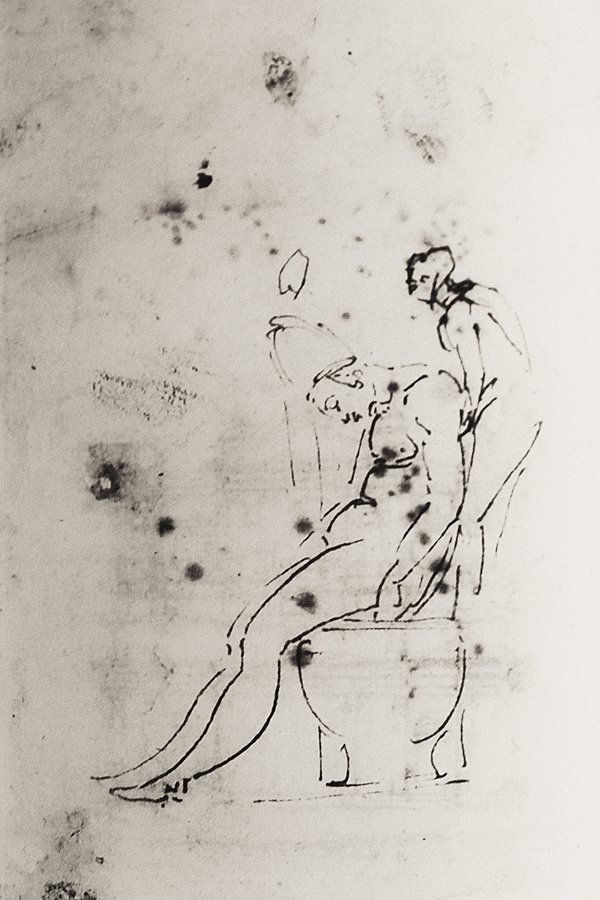.
I was inspired for this post by the book I'm reading: Michelangelo Architect.
Excerpt:
"Saint Peter's in the Vatican
For a strong believer such as Michelangelo, what had the responsibility for
constructing the mother church of Christianity meant in a time when the Christian
community was shattered, the dogmas refuted, and the authority of the pope
and Curia contested? Was this conflict not the perfect opportunity and pretext, if
not the true motive, for the rebuilding of the Vatican church in Rome? Not just in
Germany but everywhere, the scandal over the selling of indulgences had spread
and rekindled the old argument about the extravagance of the Curia and the
corruption of the clergy. More important, it had opened up the critical doctrinal
issue of the legitimacy of the very existence of the Church, of its mandate, its
presence, and its actions. Faith was the axis of Michelangelo's thought and the
basis of his internal dispute with the methodical skepticism of Leonardo da Vinci.
This faith, rendered more combative in his youthful ardor by the apocalyptic
preaching of Savonarola in Florence, brought him close to the supporters of
Catholic reform in Rome. He condemned the immorality of the clergy and the
luxury of the Curia, and he told Julius II, at the time of his work on the Sistine
Ceiling, that he would not use gold to decorate the clothing of the ancestors of
Christ depicted there, because they had been poor. The mandate to continue the
new Saint Peter's, with the permission to change what had already been done
(although within reasonable limits), meant first of all to reduce the empty
triumphalism of the sumptuous and complex design of Antonio da Sangallo the
Younger, then to render visible in architectural form the true doctrine, and finally
to make the church-Church a strong weapon in the struggle against heresy. It is
well known that Michelangelo was scrupulous about this commission to the point
of obsession; the salvation of his soul would depend upon the result obtained in
carrying out this enormous task. He was old, and death was near."
MICHELANGELO ARCHITECT
By Giulio Carlo Argan and Bruno Contardi
Translated from the Italian by Marion L. Grayson
HARRY N. ABRAMS, INC., PUBLISHERS
1993
ISBN 0-8109-3638-0
 |
| . Étienne Dupérac. Exterior view of Saint Peter's in the Vatican, according to Michelangelo's design. . |
 |
| . Michelangelo, Giacomo della Porta and Luigi Vanvitelli. Wood model of dome and drum for Saint Peter's. . |
 |
| . Michelangelo, Giacomo della Porta and Luigi Vanvitelli. Wood model of dome and drum for Saint Peter's. . |
 |
| . Michelangelo. Elevation of drum and lantern of dome for Saint Peter's. . |
 |
| . Michelangelo, Giacomo della Porta and Luigi Vanvitelli. Wood model of dome and drum for Saint Peter's. . |
 |
| . Michelangelo. Studies for dome and lantern of Saint Peter's. . |
 |
| . Michelangelo, Giacomo della Porta and Luigi Vanvitelli. Wood model of dome and drum for Saint Peter's. . |
 |
| . Domenico Passignano (1559-1638) . |
The painting by Passignano (1619) shows Michelangelo at the ceremony when the
model of St. Peter's, with the dome he designed, was presented to the Pope.
With the rebuilding of St. Peters during the Renaissance, the Popes built the
largest church in the world as a manifestation of their claim to be "Caput mundi",
the head of the world. Michelangelo's frescoes in the Sistine Chapel are also
world famous.
 |
| . Michelangelo. Study for Tomb of Julius II (pontiff supported by angel). . |
 |
| . Étienne Dupérac. Section of elevation of Saint Peter's in the Vatican, according to Michelangelo's design. . |

No comments:
Post a Comment